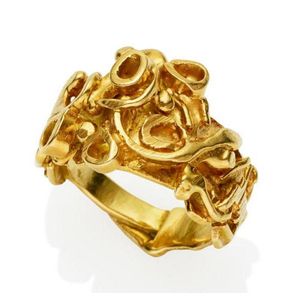Qing dynasty Soapstone Figure of Lohan and Lion Cub
You must be a subscriber, and be logged in to view price and dealer details.
Subscribe Now to view actual auction price for this item
When you subscribe, you have the option of setting the currency in which to display prices to $Au, $US, $NZ or Stg.
- Qing Dynasty - The Qing Dynasty was the last imperial dynasty of China, ruling from 1644 to 1912. It was established by the Manchu people, who originated from the northeastern region of China. The Qing Dynasty was preceded by the Ming Dynasty and followed by the Republic of China.
- Incised - A record of a name, date or inscription, or a decoration scratched into a surface, usually of a glass or ceramic item with a blunt instrument to make a coarse indentation. Compare with engraving where the surface is cut with a sharp instrument such as a metal needle or rotating tool to achieve a fine indentation.
- Ming Dynasty - The Ming Dynasty was a ruling dynasty of China from 1368 to 1644. It succeeded the Yuan Dynasty and preceded the Qing Dynasty. The Ming Dynasty was established by Zhu Yuanzhang, a former Buddhist monk who became a rebel leader and eventually overthrew the Mongol Yuan Dynasty. During the Ming Dynasty, China experienced a period of relative stability and prosperity. The government was centralized and bureaucratic, with the emperor at the top of the hierarchy. The Ming Dynasty is known for its cultural achievements, including the development of porcelain, the invention of movable type printing, and the construction of the Great Wall of China.
This item has been included into following indexes:
Visually similar items

A timber Buddha, the serene carved figure of the Buddha seated in dhyanasana, his hands in dhyana mudra holding a small vessel, raised on a double lotus base. Height 20 cm

A Tibetan gilt copper repousse plaque, circa 18th century, depicting a bearded deity riding a snow lion, 20 cm high

A large Chinese Ming style bronze Buddha, seated on a lotus petal stand, the hands clasped with raised index fingers, a full face centred with a small urna, eyes downcast below his domed usnisa, wearing flowing robes that fall around the upturned feet, the

A gold ring, attributed Gary Bradley, Melbourne, circa 1960's. 18ct yellow gold. Weight 13.8 grams. Ring size L ½
